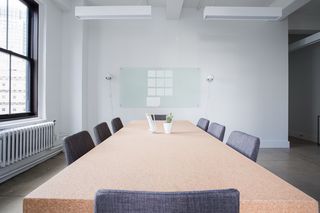Leadership
The Power Seat: Where You Sit Matters
Find out how you can help or hurt your chance of success based on where you sit.
Posted October 15, 2012 Reviewed by Davia Sills

The "power seat" has to do with the power dynamics between where you sit and the rest of the group.
For the most part, we’ve all been exposed to group setting dynamics, starting out with our family. As children, we learned to pick up on social cues to make sure that we conform to the norms around us. One of these cues is known as the "power seat"—it’s the seat that we unconsciously designate as the one that has the most authority.
For example, think back to when you were a child having a family dinner. Who would sit at the head of the table? For some of us, our mom and dad would sit at opposite sides of the dinner table, and for others, our mom would sit right next to our dad in the corner position.
How about when you think of a wedding you’ve attended, including yours, if that’s applicable. Where did the bride and groom sit? In the middle. The most important guests sat to their immediate right or left, similar to what you would find in Leonardo Da Vinci’s Last Supper painting, where the most important figures were seated in the middle.
Whether you are recalling dinner with your mom and dad or a wedding, the concept of the power seat is something we’ve known for a long time. What you may not know is that depending on where you sit, you will initiate a different type of reaction from the people seated around you.
In the case when you sit at either end of the table, you send a few unspoken messages to the people who sit around you. These messages are:
1. You are the leader.
2. You are in control.
3. You are there to intimidate.
If you sit in the middle seat, you send a whole other set of messages, such as:
1. You are a part of the team.
2. You are approachable.
3. You are there to collaborate.
These messages may not seem obvious at first, but when you sit in either power seat, you will notice a shift in power dynamics from the team around you. Many people have asked me, “What’s the best seat to use?” It really depends on the behavior you are looking to drive.
What about square or round tables?
I also get asked if these concepts apply to other table shapes, and the answer is yes.
In square tables, everyone gets to sit in a "Combative and Corner" position. Typically, the most resistance will come from the person seated directly opposite you—in the "gunslinger" position—and when four people are seated, everyone has someone sitting opposite them.
To claim the power seat in this setting, just move your chair back a little, but not too far; otherwise, it will give the impression you don’t want to be there.
In the round table, also known as the King Arthur table, everyone has an equal amount of authority and status.
A round table creates an atmosphere of relaxed informality and is ideal for promoting discussion among people who are of equal status, as each person can claim the same amount of table territory; unfortunately, it does distort the power distribution for the person in charge.
Similar to the square table, the power seat would be created by moving the chair slightly back. If you don’t need the seats next to you, remove them.
The next time you sit with your client or at a meeting, be aware of where you sit or who’s sitting where. You will start to notice the power dynamics change based on who’s sitting next to whom.
Bernardo Tirado, PMP
Bernardo is a Behavioral Scientist and Industrial Psychologist with certifications in Six Sigma, Project Management, and Agile/Scrum. He covers leadership and technology for PsychologyToday.com.
Follow Bernardo on:
Twitter / YouTube / LinkedIn / Facebook / Instagram / GooglePodcasts


